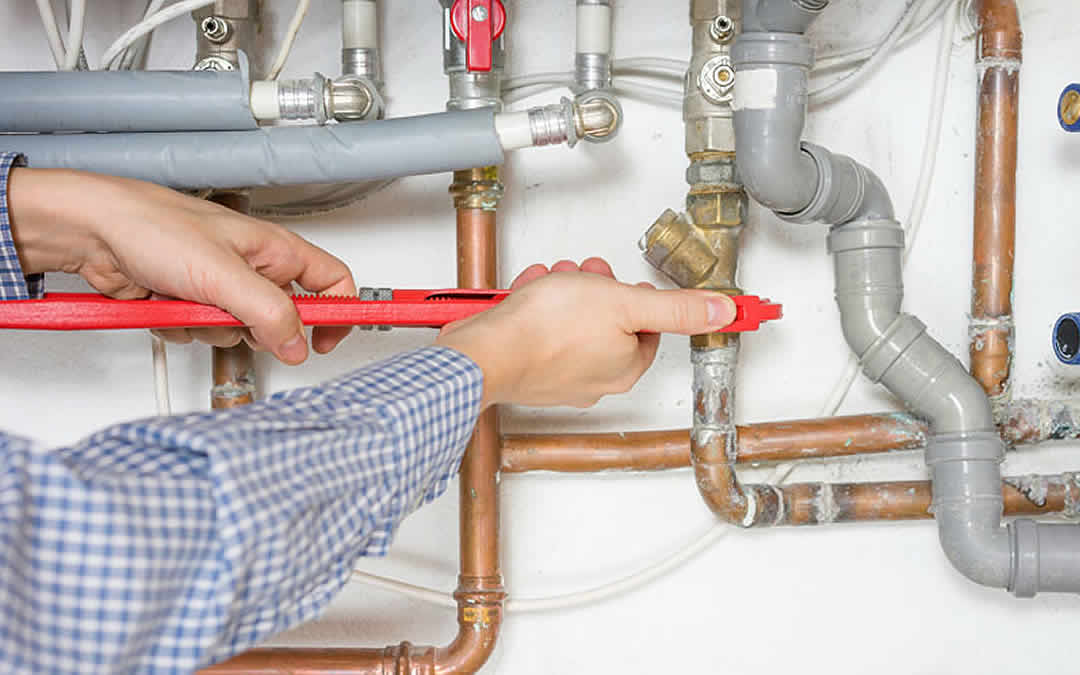Delving into the ABCs of Home Plumbing: A Beginner's Manual
Delving into the ABCs of Home Plumbing: A Beginner's Manual
Blog Article
How do you feel when it comes to What to Know About Plumbing: Basics, Tips, and Insights?

Plumbing is an important facet of any home, responsible for providing tidy water for drinking, cooking, and showering, along with removing wastewater safely. Comprehending the essentials of home plumbing is essential for every property owner to make sure appropriate upkeep, troubleshooting, and, if essential, fixings. In this newbie's overview, we'll cover the basic principles of home plumbing to aid you end up being a lot more aware of exactly how it works.
Water Supply System
The water supply system brings tidy water into your home from a municipal water resource or a personal well. It consists of a major water line that links to your home's plumbing system, typically situated underground. A water meter measures the quantity of water taken in, while a shut-off valve permits you to regulate the circulation of water right into your home.
Plumbing Fixtures
Plumbing fixtures are devices that supply water to various parts of your home and include sinks, taps, commodes, showers, bath tubs, and home appliances such as dishwashers and washing devices. Each fixture is linked to the supply of water system using pipes and fittings and may have its shut-off shutoff for upkeep or emergency situations.
Water Heating Unit
The water heater is accountable for heating water for domestic use, consisting of showering, cooking, and cleaning. Typical sorts of hot water heater consist of tank-type hot water heater, tankless (on-demand) water heaters, and heat pump water heaters. The hot water heater is linked to the supply of water system and provides warm water to plumbing fixtures as needed.
Drain System
The drainage system removes wastewater from your home and lugs it away to a sewer treatment facility or septic tank. It includes a network of pipes, installations, and fixtures that transfer wastewater from plumbing components to the primary sewage system line or sewage-disposal tank. Correct drain is necessary to protect against clogs, back-ups, and sewage leaks.
Ventilation System
The air flow system aids keep appropriate air pressure and avoid drain gases from entering your home. Air vent pipes, additionally called vent heaps, expand from plumbing components to the roof, permitting sewer gases to get away securely outdoors. Ventilation pipelines also permit air to go into the water drainage system, assisting in smooth wastewater circulation and stopping suction or vacuum cleaner effects.
Usual Plumbing Tools
Having the right tools accessible is essential for performing fundamental plumbing fixings and upkeep jobs. Common plumbing tools consist of flexible wrenches, pipe wrenches, pliers, pipeline cutters, hacksaws, plungers, augers (or drain snakes), and Teflon tape. Having these devices easily available can assist you deal with small plumbing issues successfully.
Fundamental Plumbing Fixings
While some plumbing repair services might call for specialist help, numerous usual issues can be resolved with basic do it yourself strategies. Knowing just how to fix a leaking tap, unclog a drain, change a commode flapper, or repair a dripping showerhead can save you money and time on plumbing repair work.
Final thought
Understanding the essentials of home plumbing is essential for every home owner to keep a secure, practical, and reliable plumbing system. By acquainting yourself with the water supply system, plumbing fixtures, water drainage system, ventilation system, common plumbing devices, and fundamental fixings, you can confidently address minor plumbing problems and guarantee your home's plumbing system runs smoothly.
Understanding Basics of Home Plumbing System: A Beginner's Guide
The Main Components of Your Home Plumbing System
The Water Supply System
This system is responsible for transporting fresh water into your home. It usually has a main water line that splits into two branches: one directed towards cold water services and the other connected to a water heater for hot water. The pressure is key here; it ensures water reaches all parts of your house.
The Drainage System
Once water has been used, it becomes wastewater that needs to be removed from your home. This is where the drainage system comes into play. It includes all the pipes that carry wastewater and sewage away from your house to sewage treatment facilities or septic tanks.
The Vent System
The vent system prevents sewer gases from entering your home and helps maintain the pressure balance that allows wastewater to flow out properly. These vents usually exit through the roof of your house.
Water Heating System
For those who enjoy hot showers or using hot water for cleaning, the water heater is a crucial part of the plumbing system. It can be a tankless system, which heats water on demand, or a traditional water tank model.
Common Plumbing Problems and Basic Troubleshooting
Plumbing systems, while designed to be durable, can face issues like clogged drains, leaky faucets, or low water pressure. Here are some basic troubleshooting tips:
Clogged Drains
Use a plunger or a plumber's snake to try and dislodge whatever is blocking the drain. Regular cleaning can prevent clogs.
Leaky Faucets
Often caused by worn-out washers or gaskets, these can usually be replaced by someone with basic DIY skills.
Low Water Pressure
This might be due to sediment build-up in your fixtures or a leak somewhere in your water line. Cleaning out aerators or seeking a professional to detect leaks might be necessary.
Preventive Maintenance Tips
Maintaining your plumbing system is key to avoiding emergencies. Regularly check for leaks, avoid disposing of grease down the sink, and have your system inspected by a professional plumber at least once a year.

I came across that review about Plumbing Basics Every Homeowner Should Know when doing a search on the internet. So long as you liked our blog post plz be sure to pass it around. I love your readership.
Schedule A Service Report this page